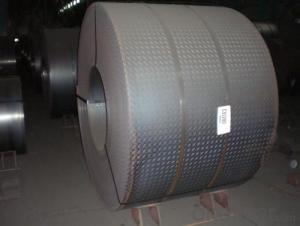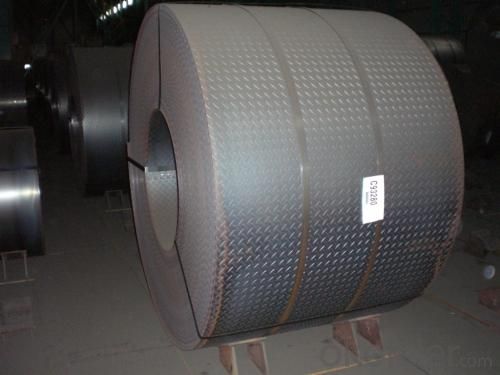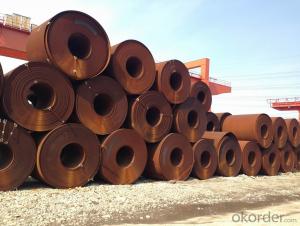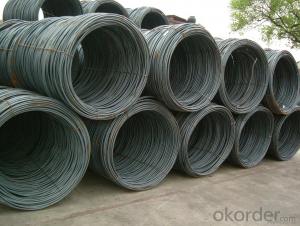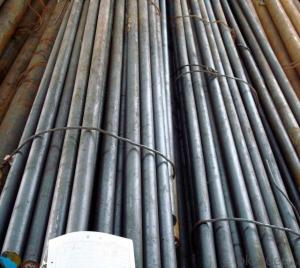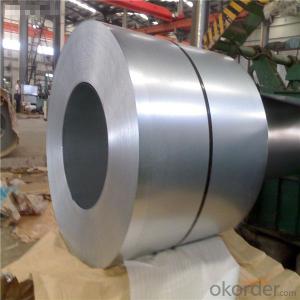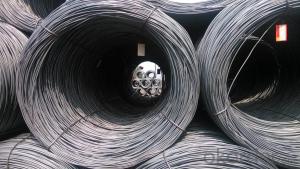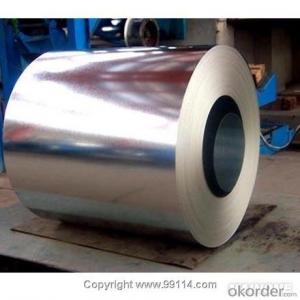Hot- rolled steel coil for construction low hardness
- Loading Port:
- Tianjin
- Payment Terms:
- TT OR LC
- Min Order Qty:
- 25 m.t.
- Supply Capability:
- 100000 m.t./month
OKorder Service Pledge
OKorder Financial Service
You Might Also Like
Product Description:
One, introduction
Edit
Hot rolled coil is used for continuous casting slab or slab as raw material, after reheating furnace heating, scales entered the roughing mill in the high pressure water, roughing cut is expected by the head, tail, and then enter the finishing mill, the implementation of the computer controlled rolling, finally after rolling through the laminar cooling (computer controlled cooling rate) and coiling machine coiling, become straight hair volume. Hair straightener roll head, tail often forms a tongue shape and fishtail, thickness, width of poor accuracy, edge has wavy, folding, tower and other defects. The volume weight heavier, steel coil diameter is 760mm. (general pipe industry like use. )
2 two, characteristics
Edit
Because there is no after annealing treatment, the hardness is very high (HRB greater than 90), mechanical processing performance is poor, only a simplebending process has less than 90 degree directional (direction perpendicular to the rolled).
3, use three
Edit
Hot rolled products with high strength and good toughness, easy processing and good forming can be excellent performance of welding, which is widely used in ships, cars, bridges, buildings, machinery, boiler, pressure vesselmanufacturing industry.
The scope of application:
(1) after annealing processing into the common cold;
(2) processing galvanized galvanized unit before the annealing treatment;
(3) the basic do not need to process the panel.
4 four, classification
Edit
Carbon steel plate, carbon plate, low alloy plate, ship plate, bridge plate, boiler plate, container plate etc.. Rolling hard volumes: under normal temperature,the hot pickling volumes of continuous rolling.
Hot rolled steel strip products include steel (roll) and the shear of steel plate.And steel (coils) can be divided into straight and finishes volume (the volume,smooth rolling and slitting roll).
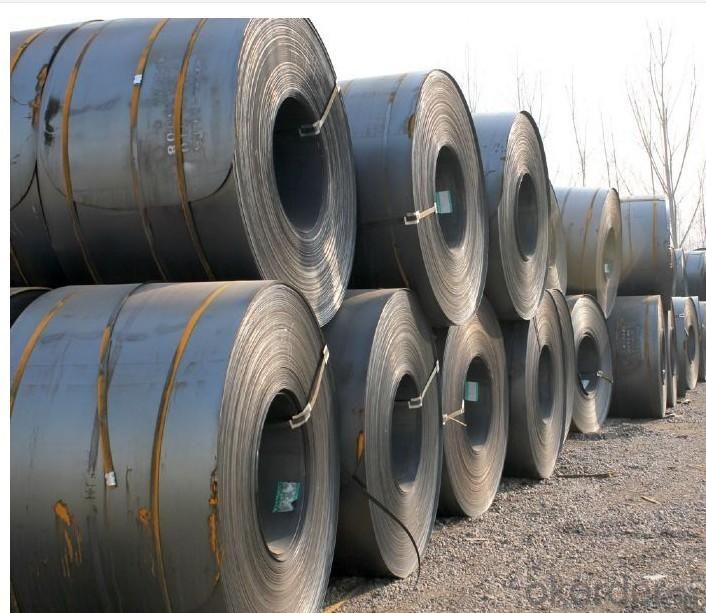
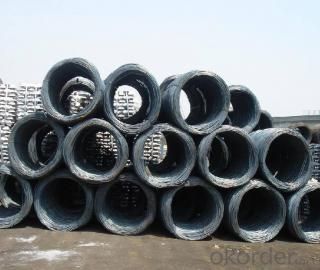
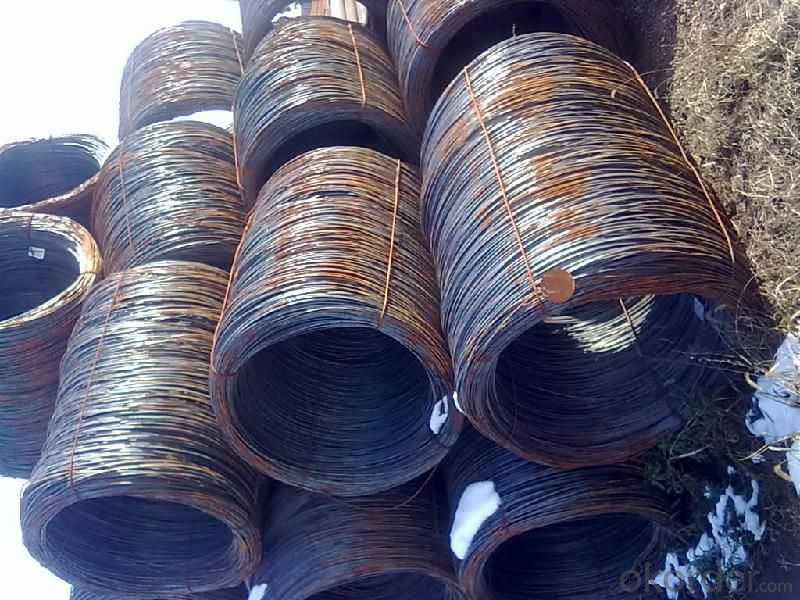
- Q: What are the main factors influencing the choice of steel wire rod technical support?
- The main factors influencing the choice of steel wire rod technical support can vary depending on the specific needs and requirements of the industry or company. However, there are several common factors that play a significant role in this decision-making process. One of the key factors is the technical expertise and knowledge of the support provider. The chosen technical support team should have a deep understanding of steel wire rod production processes, equipment, and technologies. They should have the necessary experience and expertise to provide guidance and solutions for any technical challenges that may arise during production. Another important factor is the reliability and responsiveness of the technical support team. Steel wire rod production processes can be time-sensitive, and any technical issues or breakdowns can lead to costly production delays. Therefore, having a responsive technical support team that can quickly address and resolve any issues is crucial for ensuring smooth and uninterrupted production. The availability of comprehensive technical support services is also a significant factor. This includes not only troubleshooting and resolving technical issues but also providing guidance and assistance in areas such as process optimization, equipment maintenance, and quality control. A comprehensive technical support provider can offer a holistic approach to enhancing the overall efficiency and productivity of the steel wire rod production process. Cost is another important consideration. Companies need to evaluate the cost-effectiveness of the technical support services offered. This involves considering factors such as the upfront cost of the support, ongoing maintenance expenses, and the potential cost savings or productivity improvements that can be achieved through the use of the support services. Furthermore, the reputation and track record of the technical support provider are essential factors to consider. It is crucial to choose a provider with a proven track record of delivering high-quality technical support services to ensure reliability and effectiveness. Lastly, the compatibility and integration of the technical support services with the existing infrastructure and systems should be evaluated. The chosen support provider should be able to seamlessly integrate their services into the existing production processes and systems, minimizing disruptions and maximizing efficiency. In conclusion, the main factors influencing the choice of steel wire rod technical support include technical expertise, reliability and responsiveness, comprehensive services, cost-effectiveness, reputation, and compatibility. Considering these factors will help companies make an informed decision that meets their specific needs and requirements.
- Q: What are the different surface lubrication methods for steel wire rod?
- Steel wire rods can be subject to various surface lubrication techniques. Some options include: 1. Phosphate Coating: By applying a phosphate coating to the wire rod's surface, friction is reduced, and the lubrication properties are enhanced. 2. Hot Dipping: Immersing the wire rod in hot lubricating oil or grease allows the lubricant to melt and adhere to the surface, creating a thin film that minimizes friction during processing. 3. Dry Lubrication: Applying a dry lubricant, like powder or solid film, forms a thin coating that reduces friction and provides lubrication during processing. 4. Polymer Coating: Polymer coatings, either sprayed as a liquid or heat-bonded as a solid film, can be added to the wire rod's surface to improve lubrication. 5. Oil Coating: A thin layer of oil is applied to the wire rod's surface, reducing friction and providing lubrication during processing. 6. Drawing Compounds: During the wire drawing process, drawing compounds are frequently utilized to lubricate the wire rod. These compounds are applied to the surface, improving drawing performance by reducing friction. In summary, these diverse surface lubrication methods can effectively diminish friction, enhance surface finish, and optimize the processing performance of steel wire rods. The selection of a specific lubrication method depends on factors such as wire rod type, processing requirements, and desired performance characteristics.
- Q: What are the main factors affecting the market expansion of steel wire rod?
- The main factors affecting the market expansion of steel wire rod include demand from various industries such as automotive, construction, and infrastructure, as well as economic growth and industrialization in emerging markets. Additionally, factors such as government policies, technological advancements, and competitive pricing also play a significant role in driving the market expansion of steel wire rod.
- Q: How is steel wire rod bundled and packaged for transportation?
- To ensure the safety and ease of handling, steel wire rods undergo bundling and packaging before transportation. Various methods are commonly employed for this purpose. One frequently used approach involves bundling the rods together using steel straps or wires. Typically, the rods are arranged in an orderly stack, and the straps or wires are tightly wound around the bundle to firmly secure the rods in place. This bundling technique prevents the rods from shifting or rolling during transportation, thereby minimizing the risk of damage. Moreover, steel wire rods are often packaged in sturdy wooden crates or pallets to provide additional protection. These crates or pallets serve as a stable foundation for the bundled rods, facilitating their lifting and movement using forklifts or other handling equipment. Furthermore, the crates or pallets safeguard the rods from direct contact with the ground, reducing the likelihood of corrosion or other types of damage. To further enhance the protection during transportation, it is common to wrap the steel wire rods in plastic or shrink-wrap. This additional layer of packaging shields the rods from moisture, dust, and other contaminants that could potentially cause corrosion or surface damage. Additionally, labels and markings are affixed to the bundles and packaging to convey essential information about the contents. This includes details such as the type and grade of steel, the quantity of rods, and any specific handling instructions. The presence of these labels and markings facilitates efficient and accurate identification and handling of the steel wire rods during transportation and storage. In conclusion, bundling and packaging steel wire rods for transportation involves securing the rods using steel straps or wires, placing them in wooden crates or pallets, and providing additional protection through plastic or shrink-wrap. This comprehensive approach ensures that the rods are adequately shielded, well-organized, and easily managed throughout the transportation process.
- Q: What is the average price of steel wire rod?
- The average price of steel wire rod varies depending on factors such as the quality, size, and market conditions. It is recommended to consult with suppliers or refer to industry reports to get the most accurate and up-to-date information on the average price.
- Q: How is steel wire rod used in the manufacturing of wire for fishing nets?
- Steel wire rod is used in the manufacturing of wire for fishing nets as it serves as the primary material for creating the strong and durable wire that forms the net structure. The wire rod is first drawn through a series of dies to reduce its diameter and increase its tensile strength. This drawn wire is then twisted or braided together to form the individual strands that make up the fishing net. The resulting wire netting is capable of withstanding the tension and pressure exerted during fishing activities, ensuring the net's reliability and longevity.
- Q: How is steel wire rod used in the production of wire mesh reinforcement?
- Steel wire rod is an essential component in the production of wire mesh reinforcement. It serves as the main raw material for manufacturing wire mesh, which is widely used in construction and other industries for reinforcing concrete structures. To produce wire mesh reinforcement, steel wire rod is first processed through a series of manufacturing steps. The rod is typically drawn through a series of dies to reduce its diameter and increase its length. This process, known as wire drawing, results in a thinner and longer wire with improved mechanical properties. The drawn wire is then fed into a specialized machine called a wire mesh welding machine. This machine uses electric resistance welding to join the wires together, forming a grid-like pattern. The welding process ensures that the wires are securely bonded at their intersections, creating a sturdy and durable wire mesh. The wire mesh reinforcement is used in various construction applications, such as in the construction of concrete slabs, walls, and columns. It is embedded in concrete structures to provide additional strength, prevent cracking, and increase the overall load-bearing capacity. The wire mesh acts as a reinforcement, distributing the forces and stresses evenly across the concrete, thereby enhancing its structural integrity. Furthermore, wire mesh reinforcement is also utilized in other industries, including agriculture, mining, and manufacturing. In agriculture, it is commonly used as fencing to secure livestock and crops. In mining, wire mesh is employed for safety purposes, such as preventing rockfalls and supporting tunnel walls. In manufacturing, wire mesh is utilized for filtration, separation, and containment purposes, among others. In summary, steel wire rod plays a crucial role in the production of wire mesh reinforcement. Its transformation through wire drawing and subsequent welding forms the basis for creating durable and versatile wire mesh. This reinforcement is widely used in construction and other industries to enhance the strength and integrity of various structures.
- Q: How is the tensile strength of steel wire rod tested?
- The tensile strength of steel wire rod can be assessed through a method known as the tensile test or tension test. This test aims to ascertain the wire rod's ability to withstand tension by determining the maximum load or force it can endure without breaking. In the process of the tensile test, a representative sample of the steel wire rod is prepared through cutting it into a specific length. Subsequently, the sample is placed within a testing machine referred to as a tensile testing machine or universal testing machine. This machine comprises two jaws, one stationary and one movable, which securely grip the ends of the wire rod. Once the sample is suitably positioned in the testing machine, the movable jaw is gradually pulled away from the stationary jaw, exerting an increasing force on the wire rod. The machine gauges the force applied to the sample while simultaneously recording the resulting elongation or deformation of the wire rod. Throughout the duration of the test, the force and elongation are continuously monitored until the wire rod fractures. The maximum force applied just before the fracture is noted as the tensile strength of the steel wire rod. This value signifies the highest load or stress the wire rod can withstand without breaking. To ensure precise and dependable outcomes, multiple samples are typically tested to account for any variability in material properties. The average of these results is then considered as the representative tensile strength of the steel wire rod. In conclusion, the tensile strength of steel wire rod is determined through a controlled testing process utilizing a tensile testing machine. This machine measures the maximum force applied to the sample before it fractures, providing valuable insights into the material's strength and performance.
- Q: What are the common production processes for seaborgium-coated steel wire rod?
- The common production processes for seaborgium-coated steel wire rod include wire drawing, cleaning and surface preparation, coating application, and heat treatment.
- Q: How is steel wire rod used in the manufacturing of wire forms for pet enclosures?
- Steel wire rod is used in the manufacturing of wire forms for pet enclosures as it provides the necessary strength, durability, and flexibility required to create sturdy and secure structures. The wire rod is first straightened and cut to the desired length, and then bent, twisted, or welded to form the various components of the pet enclosure, such as frames, panels, and gates. This allows for the construction of reliable enclosures that can withstand the forces exerted by pets while ensuring their safety and containment.
Send your message to us
Hot- rolled steel coil for construction low hardness
- Loading Port:
- Tianjin
- Payment Terms:
- TT OR LC
- Min Order Qty:
- 25 m.t.
- Supply Capability:
- 100000 m.t./month
OKorder Service Pledge
OKorder Financial Service
Similar products
Hot products
Hot Searches
Related keywords
